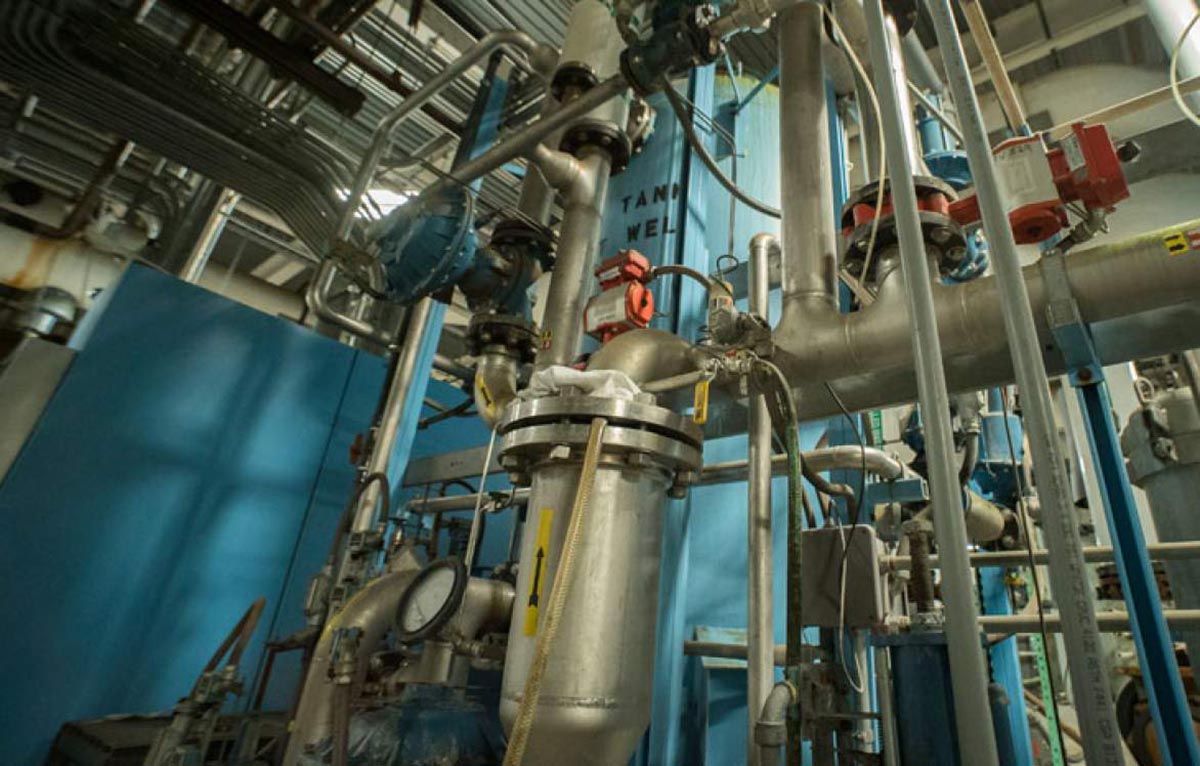These heroes hiding in plain sight keep our magnets operating at peak performance.
Our resistive magnets need anywhere from 20-33 megawatts of electricity to generate their strong magnetic fields. Between 2,000 and 4,000 gallons of cold water blast through each magnet to prevent overheating. But to make sure all that water doesn’t conduct electricity, causing the copper coils inside to decay, we depend on a special kind of hero: the resin bed.
What makes our hero so … heroic? We’ll get to that in a minute.
First, let's meet our villains — ions. Tap water is full of them. Ions conduct electrical current, but pure water does not. That’s why we only use pure water too cool our magnets. But by the time it comes out of the magnet, that water is no longer pure. The negatively charged oxygen in the H20 picks up copper ions from the magnet as it rushes through. This water, having been attacked by the ions, is no longer fit to cool our magnets.
Help!
Enter our hero, the resin bed: a 600-gallon metal tank, roughly the size of an elephant and filled with tiny resin beads. The ion-filled water is piped into the tank, where it is forcefully sprayed into the resin by an elaborate shower head.
Some of the beads are positively charged (cations) and some are negatively charged (anions). When the water splashes into the resin, the mob of angry cations and anions capture any harmful particles that the water picked up in the magnet and, basically, save the day!
Chalk another victory up to science ...
Thanks to Bryon Dalton, head of magnet operations in the DC Field Facility and scientific advisor on this story. For more information, please read our story on the cooling and electrical infrastructure for our magnets or explore this interactive tutorial on the deionization process.
By Josh Palm



